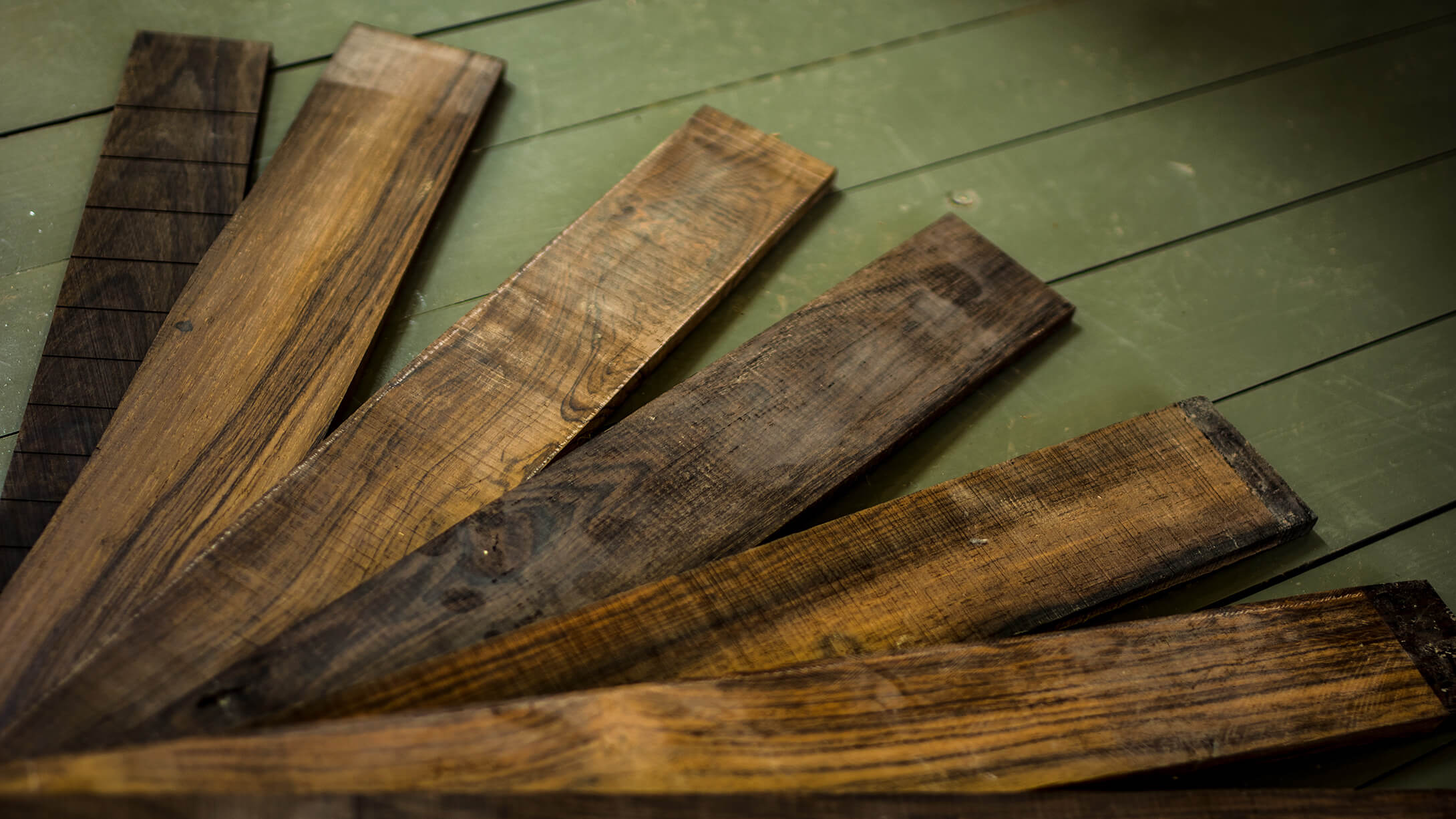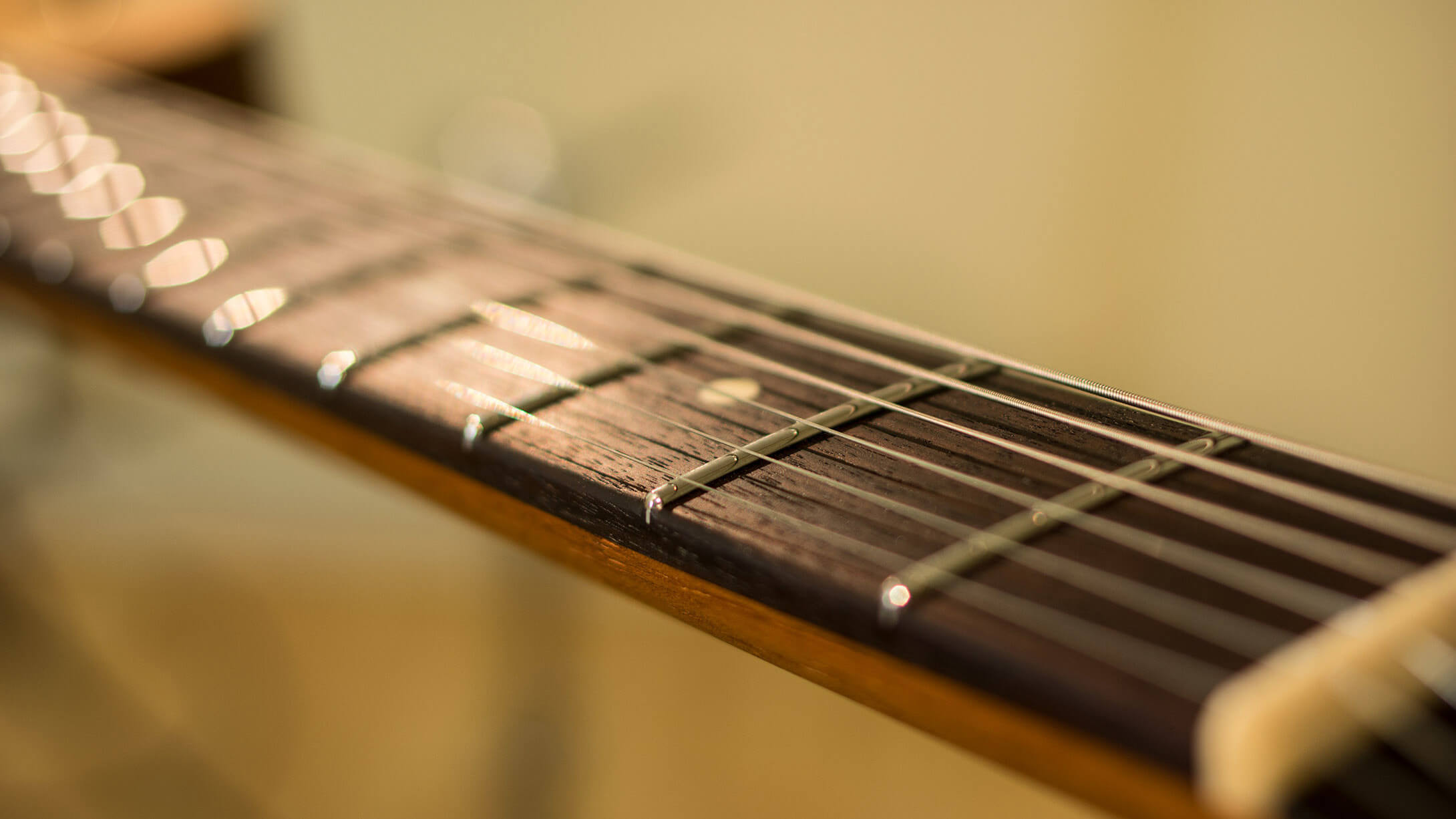
HOW DOES IT FEEL UNDER MY FINGERTIPS?
The first guitar I built from scratch
I remember well the time I was making my first guitar from scratch. It was in 1991 – I bought a piece of rosewood for the fretboard from my guitar making teacher.
Even if I had zero experience making guitars at that time, the aura of that little slab of wood was all about warmth and smooth feel, to which I fell in love with. It’s quite interesting, cause that first impression defines pretty well the tone of rosewood as well – it does add a warm, smooth touch to the tone!
The history of using rosewood in guitars
Using dark coloured hardwood species as the fretboard material for guitars has a long history. There are multiple good reasons why rosewood is so popular.
Stable and rigid tonewood
First of all, a guitar neck needs to be rigid, so hardwood with excellent bend strength makes perfect sense. Stability is another critical feature, which narrows down the options even further.
There are other important features as well, both technical (does it glue well?) – and practical (how does the wood feel when sliding my fingers on it?).
Why dark coloured fretboard?
The dark colour is actually a quite common sensical feature. The player has his/her fingers on the fretboard all the time, so a dark fretboard remains neat looking as sweat and dirt don’t show on it!

EAST INDIAN ROSEWOOD – DALBERGIA LATIFOLIA
The material follows function
In the modern times we have many more optional ways to go, but back in the day, there was no durable way to finish a light coloured material (like maple or birch) in such way that the fretboard wouldn’t have looked smudgy pretty quickly. Relic treatments weren’t fashionable in those days either – so dark hardwood was unambiguously the best way to go.
Hundreds of species
There are hundreds of rosewood variations in the world, and of all those different kinds, East Indian rosewood (Dalbergia Latifolia) is the most popular one used for guitar fretboards today. This is the most common rosewood species we use as well.
Monitored and protected
Our East Indian rosewood originates from state governed forests in India, and we buy it from reliable European FSC certified suppliers.
Dalbergia Latifolia and CITES
East Indian rosewood was added to CITES Appendix II, in January 2017 among hundreds of other tree species. If you live within European Union, there is no need for CITES certification when you buy a guitar from us. The paperwork of the guitar will have the legal CITES status of the guitar clarified.
If you live outside European Union, we will provide the CITES certificate with your guitar. If you own a guitar (with East indian rosewood fretboard) made by us before January 2017, the guitar is treated as a pre-convention item, and no certificate is needed, unless you sell your guitar to another country, crossing customs borders. In those cases you’ll get the certificate from your own country CITES authority.

BRAZILIAN ROSEWOOD – DALBERGIA NIGRA
An endangered species
In the earlier times, Brazilian rosewood (Dalbergia Nigra) – other common names being Rio rosewood or jacaranda – used to be the most popular wood for guitar fingerboards. This species has been considered endangered already decades ago, and it has been listed to CITES in its most strict category Appendix I since 1991. This means that any trade of Brazilian rosewood cut after 1991 is illegal.
Ruokangas with Brazilian rosewood?
We do have a limited stock of certified Pre-CITES Brazilian rosewood, so feel free to contact us if you’re interested in owning a Ruokangas guitar with this increasingly rare wood species.
Dalbergia Nigra and CITES
Notice that the vast majority of rosewood fretboard equipped Ruokangas guitars are made using East Indian rosewood.
We have made over the years only a very small amount of guitar with Brazilian rosewood fretboards. Every Ruokangas guitar fitted with a Brazilian rosewood fretboard comes with a CITES certificate.
If you own a Ruokangas guitar with Brazilian rosewood fretboard and do not have a CITES certificate, feel free to contact us.
How do I know which rosewood my guitar has?
If you bought your Ruokangas guitar used, we can’t necessarily help you in case the original CITES certification has gone missing, but we’ll do our best.
Before contacting us, however, please double check your Ruokangas warranty card for the wood species used for fretboard. If your warranty card (older than 2012) states ‘Rosewood’ – it means always East Indian Rosewood. Newer (2012 on) Ruokangas guitar warranty cards list the complete trade & latin names of all the wood species used in the guitar.
How do I clean a rosewood fretboard?
Check out our online Maintenance Guide for detailed instructions how to clean and maintain your guitar fretboard in good condition.